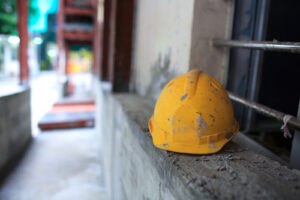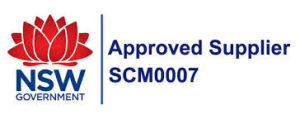[vc_row][vc_column][vc_column_text] Gaps often exist between “work as imagined” and “work as performed” and some of these gaps may subtly nudge organisations in believing that operations are safer than they are, according to new in-progress research.
Gaps often exist between “work as imagined” and “work as performed” and some of these gaps may subtly nudge organisations in believing that operations are safer than they are, according to new in-progress research.
A range of ways that can potentially decouple safety from the reality of work as performed have been highlighted in preliminary research from a Griffith University research project that analysed seven major workplace accident reports and thousands of pages of court transcripts.
“We define decoupling as the distance between the intended purpose or function of a safety document/system or practice versus its actual function in practice,” said HSE Manager Ben Hutchinson, who is currently undertaking a PhD in Safety Science.
He gave the example of a mine ventilation plan that is supposed to assist in managing ventilation in a mine (the intended purpose) but in some instances may have little practicable impact on specific ventilation practices (the actual effect).
Hutchinson, who was drawing on preliminary findings of the research project (which, importantly, is yet to undergo peer review) said there were multiple examples of inadvertently confusing requirements and specifications.
“Requirements can be seen as the overarching goal of safety activities, for example, to manage ventilation, whereas specifications are the ways to achieve that goal,” said Hutchinson.
“Looking at a ventilation plan or risk assessment – you can tweak a whole lot of stuff in a plan or risk assessment (expected controls or behaviours of people etc. in the plan or changing risk scores in the risk assessment) – but these tweaks may contribute little to changing things in the field.
“We often think about safety systems as largely functional artefacts (things that directly or semi-directly influence or impact real-world practices or hazards or at least, help describe and document how things will occur). Meanwhile, we ignore or misunderstand their symbolic impact,” he said.
In certain circumstances, Hutchinson said plans and systems can likely become more symbolic than functional, and this is problematic because organisations think they’re safer than they really are.
“By changing documents (specifications) we may believe that we’re addressing the intended problems or goals (requirements), but we’re just changing a document. It’s obvious to say, but they’re not the same thing,” he said.
This can have a subtle, but perversive, impact on safety and other organisational activities, according to Hutchinson, who gave examples of safety systems which became the primary unit of management – rather than the field issues – involved in the Esso Longford plant fire and the San Bruno pipeline explosion.
This led to multiple ‘fantasy risk defences’, or risk controls that were either missing or not capable of delivering on what they were thought to be capable of.
In the case of the Piper Alpha offshore platform disaster, Hutchinson gave the example of a rescue vessel which met a legal requirement but was so inadequate for its rescue task that it was said to be tokenistic.
“It also included a range of instances where things that organisations espoused were critical for maintaining safe operations were just never properly done, resourced or monitored,” he said.
“For instance, at Pike River and Piper Alpha training operators were said to be a critical part of maintaining safety, but little means existed to deliver on quality training nor did the organisations involved really have any way to verify whether training was delivered as intended.
“This is despite, at Pike River, for instance, there was an example where a member of the leadership team referred to the company training as evidence that they were properly addressing those risks – without really knowing what was delivered in the training.
“A key insight here isn’t that apparently important things aren’t done according to plan, since that is uncovered in virtually every investigation or proactive learning activity – ever.
“More to the point, I think, is that the few critical things that were said and believed to be the most important factors had little rigour behind them despite the misplaced belief that safety systems were working effectively,” he said.
Hutchinson also said there are a number of important steps organisations can take to develop realistic and appropriate risk management practices.
“One is that I think it’s critical to realise that, paraphrasing people who have said it far better than I, ‘artefacts are not the routine’ (Luciana D’Adderio, The University of Edinburgh) – that is, the document or system artefact that you’re managing is not the actual, tangible issue that you’re trying to manage,” he said.
“Again, it seems obvious but we identified so many instances where the management of a document symbolically took on the guise of the issue.”
He explained that changing a consequence or likelihood on a risk assessment or specifying a new risk control in a risk plan was believed to, somehow, magically result in some profound change in how work occurs in the field or how people or assets are exposed to danger. “It rarely works like that,” he said.
“Another quote that I really like that I think highlights this disparity, and is a key argument in my PhD thesis, is from Pentland Feldman (2008, Information and Organization).
“They note that “the frequent disconnect between goals and results arises, at least in part, because people design artefacts when they want patterns of action,” he said.
“Here we see how designing safety documents and other artefacts can replace actually focusing on the issue itself.”
There are a number of implications for OHS professionals in this, and Hutchinson said it is important to get more submerged into the “messy nature of normal work”.
“Seek to understand how work occurs from the perspective and lived experience of your stakeholders – constraints, resources, interdependencies, workarounds, success factors,” said Hutchinson, who recommended focusing primarily on real-world issues and the structures, beliefs, norms and practices surrounding those issues.
“If there’s some activity that you want to modify or improve (for example, confined space entry or energy isolations), then focus on learning about the activity itself: what people do, how and why they do it, what resources they have to do it, the pressures and constraints they face, what ‘good’ look like etc. – instead of focusing on changing the procedure.
“The procedure isn’t the activity and no matter how much you tweak the procedure it may have little impact on the activity,” he said.
Source: Australian Institute of Health & Safety, 19 August 2021[/vc_column_text][/vc_column][/vc_row]

 Safety Australia Group
Safety Australia Group